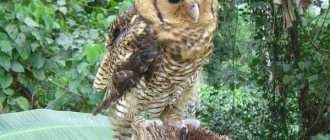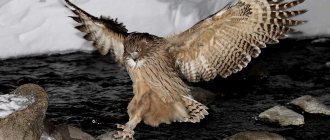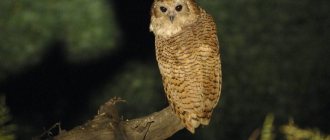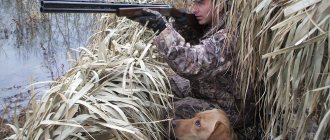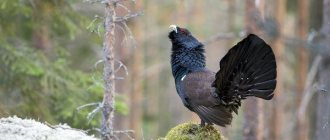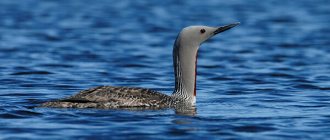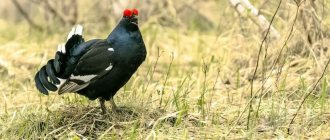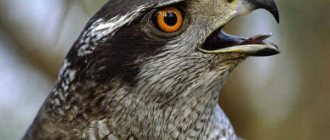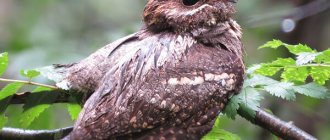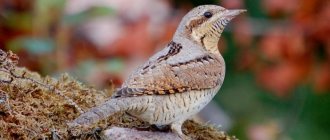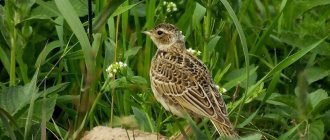- Wild animals
- >>
- Birds
We have all the eagle owl since childhood, because there are many fairy tales, nursery rhymes, and poems about him; he is the hero of various cartoons, personifying wisdom and nobility. This amazing bird looks slightly stern and serious, but very beautiful and elegant. Looking at the eagle owl, one cannot remain indifferent, because its appearance is so charming. Is he really as smart and gloomy as he seems at first glance?
Origin of the species and description
Photo: Owl
The eagle owl is a large feathered predator from the owl family, belonging to the order Owls. Until now, not everything is known about the life of these amazing twilight birds. Since time immemorial, the eagle owl has attracted people's attention with its beauty, originality and mystery. It is often called a big owl, which is not surprising, because the owl is the closest relative of the eagle owl.
Video: Owl
The characteristic distinguishing features of the eagle owl are its strong physique; the body of the bird resembles a barrel. What distinguishes the eagle owl from other birds is its huge bottomless eyes, similar to two orange moons. Above the eyes are ears made of feathers, reminiscent of furrowed mighty eyebrows. The beautiful pockmarked plumage of the eagle owl has different shades, they depend on the habitat and serve as excellent camouflage. Let us describe in more detail the characteristics of some varieties of eagle owls.
The common eagle owl is quite large, its body length can reach up to 75 cm, and its weight is about 4 kg. Sometimes the wingspan of this eagle owl reaches almost two meters. The color varies depending on the specific location where the animals live. It can be brownish, light beige, reddish. The eagle owl is widespread in the northern regions of Asia, Europe and Africa, as well as throughout the entire Eurasian continent.
The fish eagle owl may be larger than the previous one; it is under threat of destruction. The wingspan of this bird reaches 2.5 meters. The color of the predator is brown, without ripples, monochromatic, there are no feathers on the fingers and tarsus. It lives in the hollows of rotten trees, eats fish, which is why it got its name.
Regions of habitat of this eagle owl:
- Far East;
- Manchuria;
- Japan.
The Nepalese eagle owl is a medium-sized bird. The body length in rare cases is more than 50 cm. The calls of this eagle owl are very similar to those of humans, which is why there are many mystical legends about it in its homeland. The color of the bird is gray-brown, but the young are much lighter. Lives mainly in Asian countries.
The Great Eagle Owl received its name because it was first discovered by colonists in the American state of Virginia. The body length of this species is approximately 63 cm. The color of the feathers can be brownish-red, black and white or solid black. It is the largest on the American continent.
The African eagle owl can be called the smallest, its body size is about 45 cm. It is often called spotted because. its brownish-red plumage is diluted with light spots. It can be found in northern Africa and the Arabian Peninsula.
The Bengal eagle owl is of medium size, its body is about half a meter or a little more long, and its weight is a little more than one kilogram. This bird is distinguished by its light beige color with brown splashes.
The Bengal eagle owl lives in:
- Burma;
- Pakistan;
- Nepal;
- India.
This species is protected by the Indian authorities. Of course, there are other species of eagle owls that are not mentioned here.
Appearance and features
Photo: Eagle owl bird
Despite the fact that each variety of eagle owl has its own distinctive characteristics, we will still highlight the main features of the appearance of these amazing birds. We have already found out that the dimensions of different species can vary from 40 to 75 cm, and the body weight of the largest reaches 4.5 kg, although the average weight of eagle owls is 2-3 kg. Birds living in warm, southern territories are smaller and lighter than those living in northern zones.
Interesting fact: female eagle owls are larger and more massive than males.
Almost all eagle owls are strong and stocky, their legs are powerful and short, and their body is shaped like a barrel. The feet have tenacious fingers equipped with the most dangerous weapons - hook-shaped, strong black claws that pierce the prey with lightning speed, damaging its blood vessels, so the victim most often dies from blood loss. The tarsus and toes may or may not be feathered, depending on the species of eagle owl.
The plumage of eagle owls is both thick and loose, which helps the birds move without creating noise. As mentioned earlier, the feather color of all species is different, but an important detail for the eagle owl is its unsurpassed ability to camouflage, because during the daytime it sleeps, so merging with the surrounding area helps it survive.
The eagle owl's calling card is the protruding feather tufts on its head; they move vertically and resemble frowning eyebrows or ears. Their relationship to bird hearing has not been proven by scientists.
Interesting fact: some ornithologists believe that the feather tufts of the eagle owl act as a kind of antennas that capture the slightest sound vibrations, but this is just an assumption.
The eagle owl is charming and majestic in flight; its wingspan can reach up to two and a half meters. The bird makes infrequent but deep strokes, which are replaced by soaring gliding. The highest speed is observed at the moment of attack on the victim. The tail is important in flight control. It can be either short or medium in length, but is usually always rounded. The eyes of an eagle owl are striking in their size and depth.
They are round, the iris can be the following colors:
- Red;
- Intense orange;
- Yellow;
- Brown (typical for one species).
The owl's gaze is frozen, motionless and directed in front of him. Only the head rotates from side to side; it can rotate 270 degrees. There is a misconception that eagle owls are completely blind during the daytime, this is not true: even during the day they can perfectly distinguish objects that are far from them.
Where does the eagle owl live?
Photo: Eagle owl animal
Despite the fact that many species of eagle owls are endangered, these birds are quite widespread throughout our planet.
Eagle owls inhabit:
- Africa;
- North America;
- Eurasia;
- South America.
As for our country, eagle owls are distributed throughout its territory. These noble birds love a variety of natural landscapes: forests, deserts, mountainous areas, and the shores of various bodies of water. The bird does not like tundra and forest-tundra, so it cannot be found there.
Eagle owls love to settle on rocks overgrown with dense bushes; they prefer hilly areas with deep ravines. Wetlands, deep river valleys, and open forests are also favorable for the eagle owl. In general, the eagle owl tries to avoid dense forest thicket, settling on forest outskirts and edges, preferring small groves.
The main factor that determines the choice of a particular territory for permanent residence is, of course, the availability of food. The eagle owl hunts not only in its nesting area, but also in the immediate vicinity: over open spaces of fields, steppes, plains and wastelands, where a lot of different game can be hidden.
An interesting fact: the eagle owl does not shy away from people at all; it can settle on farms, in city parks, near cultivated lands, eating rodents and pests, thereby protecting the crop.
Plants
The region is home to 19 plant species listed in the book.
Category 4 includes reddish pondweed. The plant has received an uncertain status due to the difficulty of studying it. Only two places of growth have been discovered near Moscow. Today, the size, condition of the population, and limiting factors have not been precisely established. Ecologists suggest that pondweed is extremely demanding on the purity and quality of water.
Siberian buzulniks grow in limited areas in small populations. They are found in single specimens in the Losiny Ostrov National Park. The herbaceous perennial 150 cm high is disappearing due to the draining of swamps, deforestation, and plowing of fields.
The scientific name of everyone's favorite daisies is common daisy. They inhabit open areas, meadows, and clearings. Can grow on disturbed soils. Plants with large inflorescences, which so attract attention, have practically disappeared near Moscow.
Buzulnik Siberian
Common cornweed Common pondweed
The medicinal auranas that inhabited the Oka Valley are considered rare. The plant has an initially low population, which continues to decline. The plowing of floodplain meadows, the destruction of thickets along river banks, pastures, and the collection of grass for medicinal purposes gradually leads to the disappearance of the grass.
Until recently, spring primroses grew everywhere. An early flowering perennial found along the edges and clearings near forest areas. Now their numbers are sharply declining. Development and improvement of territories, collecting for bouquets, trampling, soil compaction leads to the loss of the species.
The southern borders of the region are favored by grass burrs. The plants first became known in 1903. On the territory of the Moscow region, 6 growing points have been noted. But their existence has not been reliably confirmed. Only near Lake Glubokoe in the Ruza region the population condition is assessed as stable.
Avran officinalis
Grass grass grass primrose spring primrose
Reference. According to the Moscow City Code, fines of up to 3 thousand rubles are provided for illegal collection and trade in Red Book plants.
Other representatives of plants of the Red Book of the Moscow Region
Common millipede
Salvinia floating
Horsetail
Lake poloshnik
Scheuchzeria swamp Feather feather feather
Sedge two-row
Cinna latifolia
Dwarf birch
Black hellebore
Bear onion Hazel grouse checkered
Spring adonis
Sandy carnation
Small egg capsule
Anemone oak clematis straight
Buttercup creeping
Cloudberry English sundew
Pea pea
Field maple Yellow flax
Marsh violet
Wintergreen medium St. John's wort graceful Tartarian ragwort Sphagnum obtuse Skerda Siberian
Italian aster Bluebell Altai Blue honeysuckle
Pemphigus intermedia
Sage sticky
Veronica
What does an eagle owl eat?
Photo: Common eagle owl
The eagle owl is a feathered predator; its menu is very varied and rich. It includes both small and fairly large prey. Small species of eagle owls prefer to feed on a variety of insects. Eagle owls happily eat rodents such as hamsters, squirrels, mice, gophers, and jerboas. Large individuals even hunt roe deer, badgers, deer, mountain goats, martens, and hares.
Eagle owls also do not disdain birds: ducks, woodpeckers, partridges, wood grouse, finches, herons, black grouse, crows, hazel grouse. Reptiles such as lizards, snakes and turtles also have a place in the eagle owl's diet. The fish eagle owl feeds on a wide variety of fish and crustaceans. Other species of eagle owls that live near water bodies also catch fish. These amazing birds eat bats and ordinary hedgehogs. It is not for nothing that the eagle owl has a permanent residence in places where all these living creatures are found in abundance.
Interesting fact: the size of an eagle owl's prey can exceed the size of the bird itself by 10 times.
There have been no recorded cases of an eagle owl attacking a person. Of course, the bird will not immediately be able to eat such a large prey as a raccoon or roe deer, so it hides the uneaten part in a secluded place so that, when hungry, it can continue the meal. Eagle owls can sometimes commit robbery, stealing the prey of other animals, and sometimes they also carry bait from placed traps.
The eagle owl swallows small-sized prey whole, and with its sharp beak tears off whole pieces from larger prey, which it eats along with the fur. The eagle owl almost never remains hungry, because the range of his dishes is so rich and varied.
Interesting facts about the bird
The fish owl occupies a special place in the culture of the ancient population of the Japanese islands. Since ancient times, he has been considered a deity who warns entire civilizations of dangers and enemies.
By the way, on the island of Hokkaido there is the Akan National Park, where all species of this bird are preserved. And on the shore of the lake there is the village of AinuKotan. In it, the feathered creature is considered a sacred animal and totem.
Females are approximately 20% larger than males. However, this does not affect the relationship in any way. Couples are strong unions. Such monogamous owls live with only one partner until death.
According to superstition, such a bird sitting on the roof of a house becomes a harbinger of the imminent death of one of the family members. This is why symbols and images of the fish owl are used in dark magic. And some tribes used feathers and fat in folk medicine.
Do you have any questions about the Fish Owl or something to add? Then write to us about it in the comments, this will make the material more useful, complete and accurate.
Features of character and lifestyle
Photo: Owl Red Book
Eagle owls are active and energetic in the twilight and at night, when they go out on their rapid hunt, looking for prey with keen vision.
Interesting fact: when hunting, many species of eagle owls make scary sounds that scare away small animals and sleeping birds that come out of their shelters or fly up into the air. Most often, the eagle owl kills birds in flight.
At dawn, the eagle owl returns to its shelter to sleep and digest the prey it had eaten during the night. Eagle owls hide and camouflage themselves so as not to be harmed by other birds, who hate predators and, seeing an owl sleeping during the day, try to attack; they do not cause much damage, but they interfere with the eagle owl’s rest, so he has to look for a reliable and inconspicuous shelter.
Eagle owls prefer to live alone; they are sedentary birds that adhere to a certain territory. They can make forced flights if there is not enough food in their permanent habitat. Only eagle owls living in the northern regions are considered migratory and during the harsh winter they move much further south to feed themselves.
It is worth noting that the eagle owl lives in splendid isolation until he meets his soul mate, with whom he subsequently connects his destiny for the rest of his life. Eagle owls are quite conservative and they maintain their nest in proper condition for many years in the same place. The isolated territory of a married couple of eagle owls can reach up to 80 square kilometers; the birds carefully guard it from the invasion of strangers.
Separately, it is necessary to note the vocal repertoire of eagle owls, which is so diverse that it can produce different sensations on others. The eagle owl's calls can resemble the human voice, crying, laughing, hooting, knocking, coughing and howling. It is not for nothing that in various fairy tales the eagle owl scares those who get lost in the forest at night. For this, he is often called the scarecrow and various mystical and frightening legends are created.
Insects
The list of insects included in the Red Book of the Moscow Region includes 299 taxa. Of them:
- butterflies – 198 species;
- beetles - 33 species.
In the new 2022 edition, 246 species of insects remain.
Butterflies with the unusual name mayor's winged eyes are considered possibly extinct in the region. Insects inhabited the Losiny Ostrov National Park.
The population was initially low in size. Secretive butterflies avoid people and hide among the foliage when threatened. The cutting down of pine forests, scaring during the breeding season, and fires have made a negative contribution to the life of the edge-eye. Today the species is not registered within the borders of Moscow.
The number of imperial watchmen is greatly reduced. In many areas, dragonflies have been lost for 30 years. Information about 7 points where no more than 6 individuals were observed was reliably confirmed. The decline is affected by the small number of convenient reservoirs, their pollution, and the destruction of coastal vegetation.
Close to the critical point are bright golden-green smooth bronzes. The 2cm beetles prefer old trees. Reducing the area of mature forests and cutting down hollow trees reduces suitable habitats. The number of bronzebacks in the Moscow region is extremely low.
Eastern Sawtail
Watcher Emperor
Eastern sawtails love meadows with lush forbs. The number of grasshoppers is constantly fluctuating. There are years of complete absence of insects. The highest number was recorded near the village of Kurebino. Here, in an hour of searching, 8 copies were found. More often, only single individuals are found, which is facilitated by haymaking, grazing, steppe fires, and floods.
The southern regions are favored by Norway wasps, a rare species in the region. Three populations have been recorded here. The reasons for the decline in the number of insects include the destruction of nests by humans and climate change. No sharp fluctuations in numbers were noted.
Euphorbia cocoon moths lived in dry meadows and the edges of pine forests. Butterfly taxa were recorded in the Saltykovsky, Mistsevsky, and Mikhnevsky districts. Over the past 3 decades, the existence of these populations has not been confirmed. After 2010, one caterpillar was discovered near the village of Podmoklovo, two butterflies near Marinka, and a colony of caterpillars near the Danilovskaya railway station. Limiting factors include plowing of land, haymaking, and grazing.
The number of green rockers from the order of dragonflies has greatly decreased. Insects prefer muddy ponds overgrown with reeds. The finds were noted in the Lyubertsy region. Other areas please only with single specimens. The number of dragonflies is decreasing due to the rarity of convenient reservoirs, their pollution, and destruction of vegetation.
Euphorbia cocoon moth Green rocker Norway wasp Forest racer
Forest Coleoptera racers are bronze-black in color and reach a size of 1.5-2 cm. They are found sporadically near Lake Glubokoe in the Ruza region. Since 1988, the number of beetle habitats has greatly decreased. Deforestation, construction of summer cottages, and recreational activities deprive insects of suitable habitats.
Other representatives of insects in the Red Data Book of the Moscow Region:
Swallowtail
Spring dung beetle
Callistus lunarus Ophonus obfuscated Ground beetle aureus
Blue-winged filly
Crackling moth Broad-winged rattle Wingless filly Dark-winged filly
Spotted Kopjeuska
Short-winged Swordtail Pine Sawtail
White-haired rocker
Social structure and reproduction
Photo: Eagle owl in nature
Eagle owls become sexually mature in the second year of life, and their mating season becomes more active in February-March. In some species of eagle owls, courtship is accompanied by mating dances (virgin eagle owl), while other species start a wedding song. The fish owl tries to feed the chosen one, showing her that he will take care of her when she starts hatching her eggs. As already mentioned, eagle owls form strong pairs that last a lifetime.
For the most part, eagle owls do not make nests, but lay eggs in earthen depressions between roots, stones, and under trees. Sometimes birds occupy nests left by someone. The female lays eggs every 2 to 4 days, usually there are from 3 to 5 eggs. In large varieties of eagle owls, the eggs reach five to seven centimeters in length; the shell on them has a rough surface and becomes smooth closer to the hatching of the offspring. After laying eggs, the incubation process begins, which lasts about a month. During this period, the male brings the caught prey to his lady.
When born, the baby chicks weigh about 60 grams, their entire body is covered with light fluff, and in the first week their eyes are closed. Little eagle owls are very voracious, so already three weeks after hatching, the mother begins to hunt with the father in order to feed the babies.
An interesting fact: among eagle owl chicks, the phenomenon of cannibalism is developed, when a larger and more powerful cub can eat its feathered brother.
Closer to the age of one month, the grown chicks begin to explore the space around them, traveling mainly on foot. At the age of two months, they can cover short distances in flight, and they begin to fly well closer to three months of age, but even before the age of six months they can beg for food from their parents.
Young eagle owls become independent at the age of seven months, although some live longer with their parents. Eagle owls can rightfully be called long-livers, because the average age of their life in natural conditions is about 16 years, and some live for a quarter of a century; in captivity, some specimens can live for half a century.
Interesting fact: cases have been recorded of eagle owls living up to 70 years in captivity.
Natural enemies of the eagle owl
Photo: Eagle Owl
Surprisingly, the eagle owl can be considered the top of the food chain, which indicates that it has practically no enemies in the wild. This bird is quite powerful and large-sized, so other predators are in no hurry to attack the eagle owl. Only young animals can suffer from attacks by bears and wolves, but such cases are most likely considered an exception and occur extremely rarely.
Eagle owls are threatened by a wide variety of parasites that settle in dense plumage; various diseases and infections transmitted by the same parasites can lead to the death of the bird.
The most dangerous enemy of the eagle owl is humans, who cause damage to its population, both directly and indirectly. Even in recent times, people mistakenly believed that eagle owls were harmful to agricultural lands, so they massively destroyed these beautiful feathered creatures, as a result of which many species of eagle owls are now considered endangered.
Man harms birds by encroaching on their habitats, driving birds away from their permanent inhabited territories with his vigorous activity. Also, poisoning rodents with various pesticides destroys many birds that hunt them and quickly die after tasting a poisoned mouse carcass.
Population and species status
Photo: Forest eagle owl
Despite the fact that the eagle owl is a fairly widespread species, the state of its population is very ambiguous and disappointing. Many species of these extraordinary birds are on the verge of destruction. The reason for this, unfortunately, is the rash actions of humans, which lead the numbers of many animals and birds to a deplorable state, including the eagle owl. Man not only kills birds with his own hands for hunting trophies, but also destroys their usual places of deployment.
For example, in western Europe, a sharp reduction in the habitat of the eagle owl began in the nineteenth and twentieth centuries. The eagle owl has completely disappeared in countries such as Belgium, the Netherlands, Luxembourg, and Denmark. In the predominant territory of Germany and France, this bird has also become extremely rare or has completely disappeared.
As for the Russian Federation, in our country many species of eagle owl are also considered endangered due to the fact that they were uncontrollably destroyed back in Soviet times. In general, there are practically no real figures on the state of the population of this or that species of eagle owl. There are data on the sizes of individual localized populations, which indicate that these birds remain in small numbers, usually ranging from 15 to 340 bird pairs. All this makes us think about the conservation of these beautiful and charming feathered predators.
Fish
The reservoirs of the Moscow region are included in the Volga basin. There are about 50 species of ichthyofauna here.
Among the cyclostomes, European brook lampreys are found. Accurate information on the number of fish has not been revealed. What is known is that it is constantly decreasing. Sewage pollution and uncontrolled mining have made a negative impact on the life of the lamprey.
In the last century, the waters of the Oka were famous for their large reserves of commercial sterlet. By the beginning of 2000, the number had sharply decreased, which was facilitated by river pollution, poaching, and gravel mining, which disrupts spawning grounds. Today, the number of sterlet has been increased in the Moscow River basin through artificial breeding by the Mozhaisk plant.
European Brook Lamprey Sterlet
Chekhon
Chekhon is considered a rare species for the region. Several cases of catching the species have been recorded on the Moscow River. Today the number of fish is limited. Limiting factors include poachers, natural death of sabrefish, and climate change for the heat-loving breed.
European grayling stocks are at a low level. There are several hundred of this species here; more accurate data is not available. Grayling is very sensitive to the purity and quality of water. Dirty reservoirs and illegal fishing are causing the disappearance of grayling.
Predatory asps love solitude. Large individuals were spotted in the Mozhaisk and Khimki reservoirs and the Moscow River. Depletion of reserves occurs due to sewage discharge, silting of rivers, strengthening of banks with concrete, which disrupts the natural environment of reservoirs. Since 2001, the asp has been included in the Red Book of Moscow as a vulnerable species.
Regular catches of rare bluefish have been recorded on the Oka River. The fish is found in single specimens. Due to the small population, illegal mining sharply reduces the reserves of blue.
Reference. Decree of the Government of the Russian Federation No. 1321 of November 13. In 2022, taxes have been set to compensate for damage caused to the biological resources of water bodies, regardless of the number and size of fish caught.
European grayling
Sinets
Asp
Other representatives of the fishes of the Red Data Book of the Moscow Region
White-eye Russian bystryanka
Common podust Bersh Common sculpin
Common catfish
